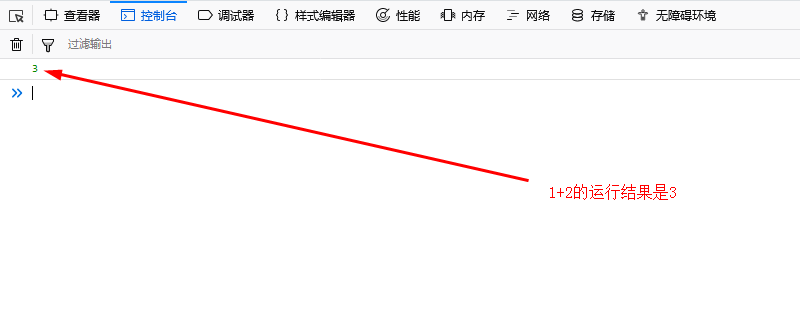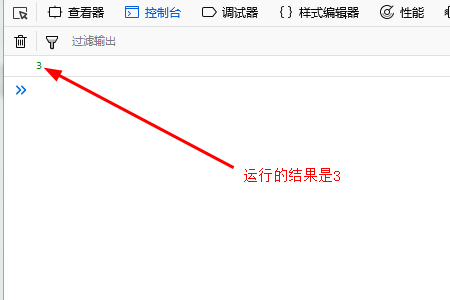How to use JavaScript's immediate execution function
How to use JavaScript’s immediate execution function? This article will introduce to you how to use JavaScript immediate execution functions.

Let’s take a brief look at what function is?
A function is an event-driven or reusable block of code that executes when it is called.
In other words, if you use a function multiple times, you can simply use it by calling it.
Use fonction, defined as follows.
fonction 函数名(){
执行的代码
}Let’s take a look againWhat is an anonymous function?
As the name suggests, an anonymous function is a function whose functionality can be defined without a function name
Using anonymous functions also has the advantage of simplifying the code when using higher-order functions.
A higher-order function is a function that can handle the function itself as a parameter or return value.
In higher-order functions, the function as a parameter is usually used only once, so I can make the code simpler by making it an anonymous function.
Additionally, since you don't need to define a global scope name by making it an anonymous function, you also reduce errors caused by duplicating function names.
Comparison of normal function and anonymous function
Let us compare normal function and anonymous function based on the following program.
function( ) {
执行的代码
}Normal function (named function)
The code is as follows
<!DOCTYPE html>
<html>
<head>
<meta charset = "utf-8">
<title>JavaScript</title>
</head>
<body>
<script>
function sum(a,b){
var result = a + b;
return result;
}
var answer = sum(1,2);
console.log(answer);
</script>
</body>
</html>When called using console.log, according to parameters 1 and 2 Output "3".

Anonymous function
Next we use anonymous functions to write the same function
The code is as follows
<script>
var sum = function (a,b){
var result = a + b;
return result;
}
var answer = sum(1,2);
console.log(answer);
</script>In a named function, we first define the function sum, we later assign sum to the variable answer and call it with parameters 1 and 2.
On the contrary, in an anonymous function, the definition of the function can be entered directly in the variable. Therefore, being able to store the function definition itself in the variable is also an advantage of anonymous functions.
The result is the same

Finally, let’s take a look at the usage of immediate execution function
immediate function Is an immediately executed function expression, called IIFE (immediately invoked function expression) in English.
The immediate function is executed immediately after it is defined.
Therefore, it is called an immediate execution function.
Use immediate function, as long as the function is defined, it can be executed immediately.
Local variables are declared in a function and used throughout the declared function.
Global variables are variables declared in the global scope, so they can be used anywhere in a JavaScript program.
For example, if a global variable is declared outside a function, it can be used both inside and outside the function.
Let’s look at an example of an immediate function
var declares a variable, and the function definition starting from functions can be executed immediately.
The code is as follows
<script>
var sum = (function (a,b){
var result = a + b;
return result;
})(1,2);
console.log(sum);
</script>We execute the function definition by immediately providing parameters to it.
So far we have assigned the function sum to the variable answer and passed the parameters. Omitting it as a variable answer means you can pass arguments directly to the defined function and execute the content.
This program is very smooth since you don't need to use var answer = sum(1,2); to call the function.
The running results are as follows: the result is also 3

The above is the detailed content of How to use JavaScript's immediate execution function. For more information, please follow other related articles on the PHP Chinese website!

Hot AI Tools

Undresser.AI Undress
AI-powered app for creating realistic nude photos

AI Clothes Remover
Online AI tool for removing clothes from photos.

Undress AI Tool
Undress images for free

Clothoff.io
AI clothes remover

Video Face Swap
Swap faces in any video effortlessly with our completely free AI face swap tool!

Hot Article

Hot Tools

Notepad++7.3.1
Easy-to-use and free code editor

SublimeText3 Chinese version
Chinese version, very easy to use

Zend Studio 13.0.1
Powerful PHP integrated development environment

Dreamweaver CS6
Visual web development tools

SublimeText3 Mac version
God-level code editing software (SublimeText3)

Hot Topics
 1657
1657
 14
14
 1415
1415
 52
52
 1309
1309
 25
25
 1257
1257
 29
29
 1229
1229
 24
24
 Demystifying JavaScript: What It Does and Why It Matters
Apr 09, 2025 am 12:07 AM
Demystifying JavaScript: What It Does and Why It Matters
Apr 09, 2025 am 12:07 AM
JavaScript is the cornerstone of modern web development, and its main functions include event-driven programming, dynamic content generation and asynchronous programming. 1) Event-driven programming allows web pages to change dynamically according to user operations. 2) Dynamic content generation allows page content to be adjusted according to conditions. 3) Asynchronous programming ensures that the user interface is not blocked. JavaScript is widely used in web interaction, single-page application and server-side development, greatly improving the flexibility of user experience and cross-platform development.
 The Evolution of JavaScript: Current Trends and Future Prospects
Apr 10, 2025 am 09:33 AM
The Evolution of JavaScript: Current Trends and Future Prospects
Apr 10, 2025 am 09:33 AM
The latest trends in JavaScript include the rise of TypeScript, the popularity of modern frameworks and libraries, and the application of WebAssembly. Future prospects cover more powerful type systems, the development of server-side JavaScript, the expansion of artificial intelligence and machine learning, and the potential of IoT and edge computing.
 JavaScript Engines: Comparing Implementations
Apr 13, 2025 am 12:05 AM
JavaScript Engines: Comparing Implementations
Apr 13, 2025 am 12:05 AM
Different JavaScript engines have different effects when parsing and executing JavaScript code, because the implementation principles and optimization strategies of each engine differ. 1. Lexical analysis: convert source code into lexical unit. 2. Grammar analysis: Generate an abstract syntax tree. 3. Optimization and compilation: Generate machine code through the JIT compiler. 4. Execute: Run the machine code. V8 engine optimizes through instant compilation and hidden class, SpiderMonkey uses a type inference system, resulting in different performance performance on the same code.
 JavaScript: Exploring the Versatility of a Web Language
Apr 11, 2025 am 12:01 AM
JavaScript: Exploring the Versatility of a Web Language
Apr 11, 2025 am 12:01 AM
JavaScript is the core language of modern web development and is widely used for its diversity and flexibility. 1) Front-end development: build dynamic web pages and single-page applications through DOM operations and modern frameworks (such as React, Vue.js, Angular). 2) Server-side development: Node.js uses a non-blocking I/O model to handle high concurrency and real-time applications. 3) Mobile and desktop application development: cross-platform development is realized through ReactNative and Electron to improve development efficiency.
 Python vs. JavaScript: The Learning Curve and Ease of Use
Apr 16, 2025 am 12:12 AM
Python vs. JavaScript: The Learning Curve and Ease of Use
Apr 16, 2025 am 12:12 AM
Python is more suitable for beginners, with a smooth learning curve and concise syntax; JavaScript is suitable for front-end development, with a steep learning curve and flexible syntax. 1. Python syntax is intuitive and suitable for data science and back-end development. 2. JavaScript is flexible and widely used in front-end and server-side programming.
 How to Build a Multi-Tenant SaaS Application with Next.js (Frontend Integration)
Apr 11, 2025 am 08:22 AM
How to Build a Multi-Tenant SaaS Application with Next.js (Frontend Integration)
Apr 11, 2025 am 08:22 AM
This article demonstrates frontend integration with a backend secured by Permit, building a functional EdTech SaaS application using Next.js. The frontend fetches user permissions to control UI visibility and ensures API requests adhere to role-base
 From C/C to JavaScript: How It All Works
Apr 14, 2025 am 12:05 AM
From C/C to JavaScript: How It All Works
Apr 14, 2025 am 12:05 AM
The shift from C/C to JavaScript requires adapting to dynamic typing, garbage collection and asynchronous programming. 1) C/C is a statically typed language that requires manual memory management, while JavaScript is dynamically typed and garbage collection is automatically processed. 2) C/C needs to be compiled into machine code, while JavaScript is an interpreted language. 3) JavaScript introduces concepts such as closures, prototype chains and Promise, which enhances flexibility and asynchronous programming capabilities.
 How do I install JavaScript?
Apr 05, 2025 am 12:16 AM
How do I install JavaScript?
Apr 05, 2025 am 12:16 AM
JavaScript does not require installation because it is already built into modern browsers. You just need a text editor and a browser to get started. 1) In the browser environment, run it by embedding the HTML file through tags. 2) In the Node.js environment, after downloading and installing Node.js, run the JavaScript file through the command line.




